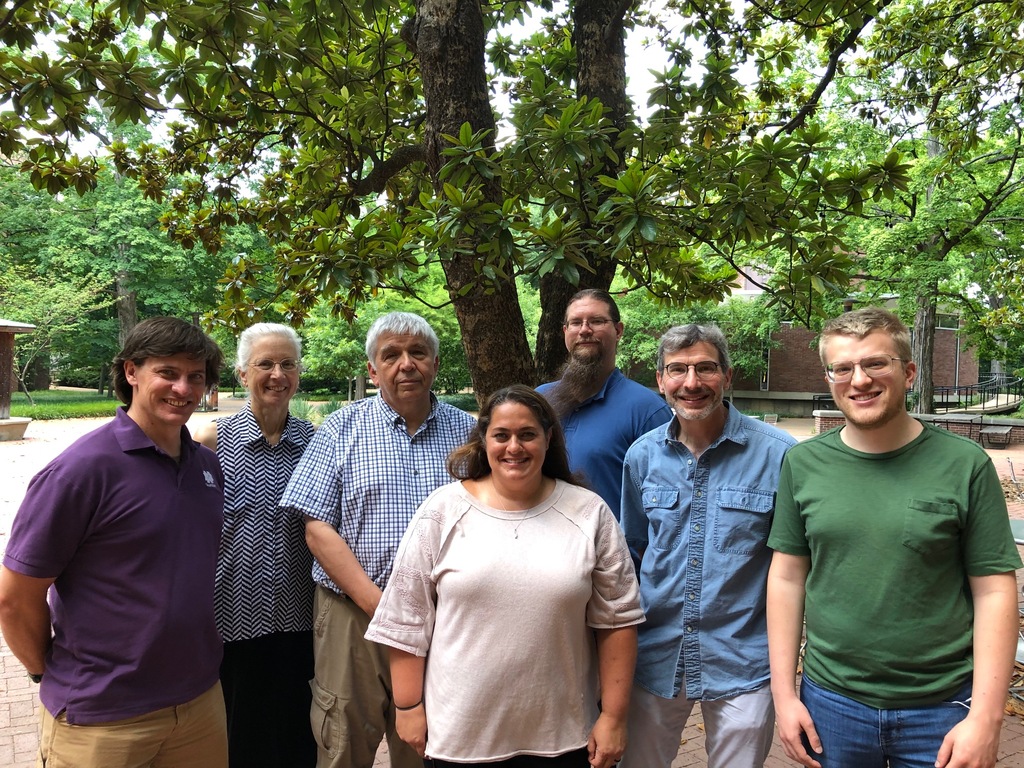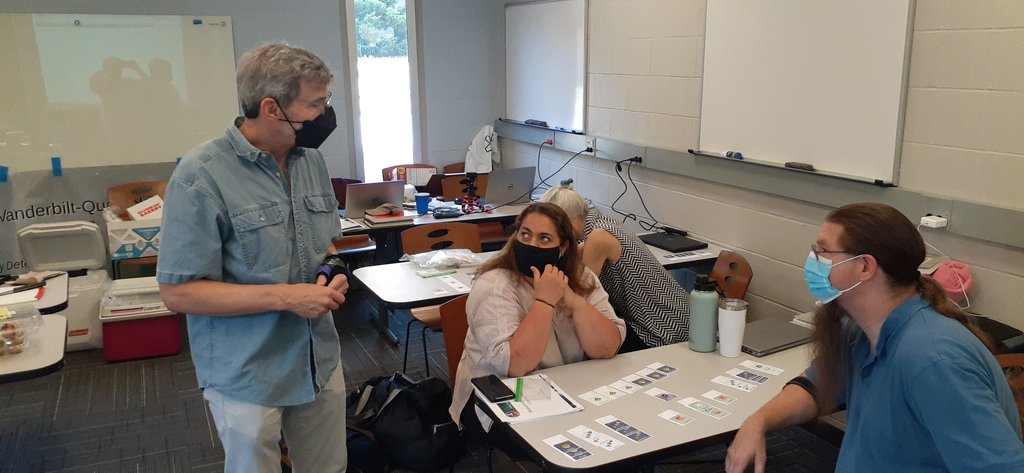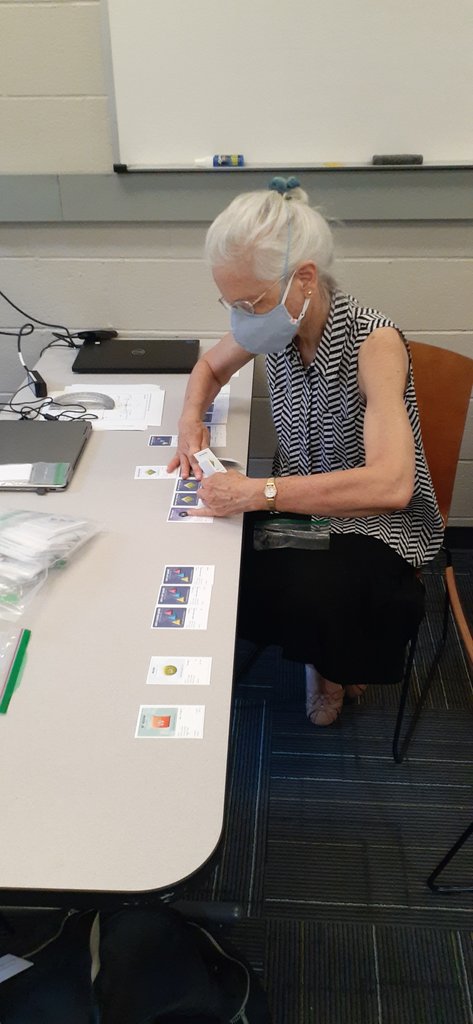Annual Report 2022 - Vanderbilt University
Vanderbilt University QuarkNet 2022
Personnel
The Vanderbilt University QuarkNet group is mentored by William (Bill) Gabella. I advise the teachers and students on the use of the Cosmic Ray Muon Detectors (CRMDs), maintain them, and help with either setup of our loaned out CRMDs or with those that are permanently at a school. I also plan and host the summer workshop(s) for the teachers. Our Vanderbilt QuarkNet long-term mentor, Dr. Med Webster, passed away in May. He was known and beloved not only by me but to most of our teachers in the program.
Cosmic Ray Muon Detectors
The Vanderbilt QuarkNet has several Center CRMDs: S/N 6181, 6165, 6891, 6851 (was with Gigante), 6795 (was with Hunnicutt) are conventional cosmic ray muon detectors, and S/N 6925 is an "unconventional" one---it has smaller scintillator paddles. The DAQ Card for S/N 6925 is with Dave Hoppert. 6925 is most useful for looking at attenuation of the muon flux with materials, like water, or bricks, stacked between pairs of scintillators. These are routinely loaned to our high school teachers for their club and classroom work. The laptops running the detectors are old, so we are seeking newer ones. We also have several CRMDs that are permanently in the schools:
S/N 6850 in Nashville, TN, with James Anderson;
S/N 6892 in Murfreesboro, TN, with Kim Baumann;
NB: S/N 6795 was in Cross Plains, TN, with Bill Hunnicutt. Returned this year. S/N 6851 was in Bowling Green, KY, with Diana Gigante. Returned this year; she retired.
The two recently returned detectors 6795 and 6851 work very well, and show very steady singles rates. With several new teachers showing interest, these are likely to be given to schools in the area. On a few channels in the other detectors, I do see long-term steady singles rates, for weeks and months, and then sudden changes which may also be stable for weeks. I assume the PMT plus voltage multiplier might be having problems, at leastwhen I am able to verify the applied voltages are correct. Will pursue diagnostics and repairs.
We are using the Java program Equip for managing the CRMDs running on the Fedora Linux laptops that we have. This works but there are several aspects of it that would be nice to have working and maintained: The GPS mapping and location no longer works. Perhaps an enhancement to output the scintillator/CRMDS geometry in a file format that can be uploaded to eLab. Also a facility to output a spreadsheet of the rise and fall times of complete pulses, like the older LabVIEW program capability, would be helpful. We use a custom fortran program for this function currently. We understand that eLab can also create this file. I strongly encourage the Python development for controlling the CRMDs which I understand is ongoing. That code base would be accessible to many high school students, and college students could be skilled enough in programming to contribute to the project.
Summer Workshop 20-24 June 2022
The main activity of the Vanderbilt QuarkNet Group is hosting the five day workshop for current group members and interested science teachers. This year we thought it advantagious to also host a one day workshop on 27 July 2022 (see below). This was an in-person meeting and attended by three teachers, two veterans of our group and one new teacher. Seems that one injury and mis-communication led to several teachers not showing up for the June workshop. During the five day workshop, the June workshop, we had our usual assortment of physics talks from professors and graduate students, review of the CRMDs and eLab, and with Ken Cecire and Jeremy Wegner's help the Higgs@10 QuarkNet activity.
On Monday we heard talks from faculty and graduates students on their research areas. Professor Johns discussed the CMS Pixel subsystem upgrades and the CMS detector in general, as well as the upcoming CERN/LHC schedule. Professor Vicki Greene discussed her work on relativistic heavy ion physics, especially the concepts of flow and jet quenching in the quark-gluon plasma. I talked about LIGO and Gravitational Waves, giving the updates of the analyses of events, and the upcoming run schedule. Professor Kelly Holley-Bockelmann talked about black holes and gravitational waves, from the LISA perspective. And Sara Frederick, a post-doc, talked about the Quasar Spectroscopy with the Sloan Digital Sky Survey. The talks were well-received and had good discussions.
Tuesday was a Cosmic Ray Muon Detector day. We setup several detectors, taking time-of-flight data to be analyzed in spreadsheets and with Python code. During the data collecting runs, the experiments in the CRMD User Guide were discussed: flux measurements and changes with direction, weather, etc; shower mode to estimate the size of the muon shower from the origin high in the atmosphere; the novel muon decay experiment described there; and other possible experiments, as well as looking at the details of the hardware. Ken Cecire was available to help out.
On Wednesday, Jeremy Wegner led us in the one day activity Higgs@10---to commemorate the 10 year anniversary of the 4th of July 2012 announcement of the Higgs discovery. We followed the activites in Higgs10-Workshop . Jeremy did a great job and it went well.
Thusday, I led us in an examination of the CRMD hardware, in a way I have always liked, by following the energy from the muon depositing some into the excitation of the scintillator, the wavelength shifting to better match the PMT, output of the PMT, and through all the chain of detection. We used a couple of chapter references from Dan Green's "The Physics of Particle Detectors," Chapter 2-"The photoelectric effect, photomultipliers, scintillators," Appendix J-"Statistics introduction," and Appendix K-"Monte Carlo models" located at our GitHub at Green's chapters . I was helped by Jeremy and Nick Spurlock a graduate student .
Friday was a typical wrap-up day, we discussed implementaiton plans and what has worked for the veteran QuarkNet teachers. We finished any outstanding experiments or data analysis from earlier in the week. We also did the QuarkNet survey any other administration.
 June 2022 Workshop
|
 |
 |
 |
Summer Workshop 27 July 2022
Because of the poor turnout for the earlier workshop, three teachers, and also the very active interest that I received from teachers new to me and the program that were unable to make, or to commit to, a five day workshop, I decided to put on a one day workshop. QuarkNet gave me permission, so I did it. It was attended by 10 teachers of whom five were new to QuarkNet. Since I did have many veterans and I wanted to introduce the program intensely, we worked on the "speed-of-muons" experiment. This allowed me time to discuss the program will data was being collected. We discussed the "standard" experiments with the CRMDs, the eLabs and spreadsheet and Google colab for data analysis, and possible uses in the classroom. Ken Cecire made an appearance via Zoom which was much appreciated. I believe the workshop was well-received and I have one teacher that has asked for a CRMD set for next semester and several others that I think will make use of the detectors. I think it was a good workshop and fills a need for an intense introduction, that I hope to keep the one day version, especially for new, interested teachers---so I may limit the number of veterans, or not.
Outlook
I think we have maintained useful contacts with our veteran teachers and, especially this year, made many new contacts. However several of our veteran teachers have retired, and more will retire in the next years. So the need for new teachers to keep the group useful for the teachers, some sort of critical mass, is important. To that end, I will keep the one day workshop along with the one week workshop, if that continues to fit into my budget. I will also try to increase the presence of QuarkNet at outreach activities, as I am able. I found that my usual email announcements about the one week workshop found some new folks. Besides emailing it to people and professors I know, I routinely email it to the head of science/STEM education in the nearby school districts. Those heads of science education then email it to their STEM teacher list. Still I found it was a few teachers' word-of-mouth that really helped bring in new teachers, both to the workshop and to query me about the program. All-in-all, this is the challenge for our Vanderbilt-QuarkNet Group, to increase the number of active teachers and to bring in new teachers.
Links of Interest
(New-ish) GitHub page for 2022 workshop https://github.com/gabella/VandyQuarkNet/tree/master/quarknet2022
Local web page, out-of-date http://www.hep.vanderbilt.edu/~gabellwe/qnweb
Facebook group page https://www.facebook.com/groups/682323215235912/
Vanderbilt QuarkNet Page (drupal, i.e. here) /group/vanderbilt-university-quarknet-center
[Edited by Bill Gabella 20221014]
